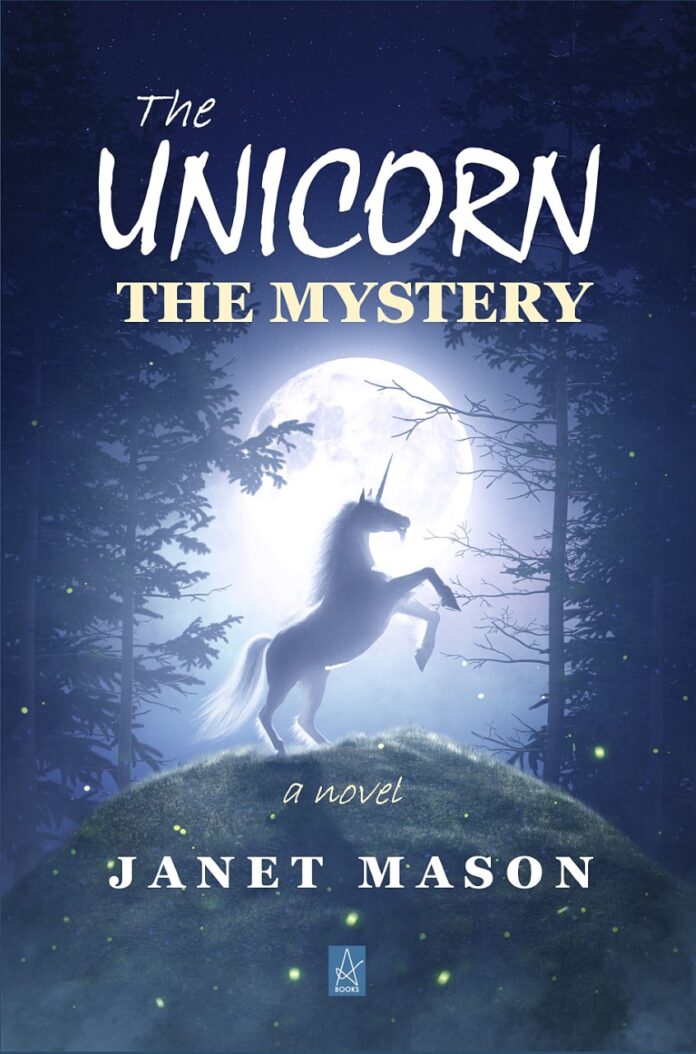The collection of seven individual hangings known as “The Unicorn Tapestries” at the Metropolitan Museum of Art at The Cloisters in New York City are, for all who have seen them, a magnificent experience of another time, place and world view.
As The Met describes them, “these are among the most beautiful and complex works of art from the late Middle Ages that survive,” and “vividly depict scenes associated with a hunt for the elusive, magical unicorn.”
It is these beautifully wrought pieces that Philadelphia writer Janet Mason has used as the background and impetus for her latest novel, “The Unicorn: The Mystery.”
Well-known in the queer, feminist and literary communities in Philadelphia, Mason’s work spans various genres. Her poetry, fiction, creative nonfiction and essays have appeared in literary journals including the “Brooklyn Review” and the “Exquisite Corpse.” She has been reading her work locally for years at various venues, like Giovanni’s Room, Penn, and the Big Blue Marble bookstore in Mount Airy.
Her work includes the poetry collections “When I Was Straight,” “A F*cking Brief History of F*cking” and “A Woman Alone.”
Mason has been writing complex narratives for years. Her last novel, “They: A Biblical Tale of Secret Genders,” was an exploration of gender fluidity set in Biblical times. Mason’s award-winning memoir, “Tea Leaves: A Memoir of Mothers and Daughters,” explored the factory-worker lives of her mother and grandmother in working-class Philadelphia during her mother’s final illness.
Mason’s latest tells the tale of the unicorn, a young (and heretical) monk, some lesbian nuns and their secret cat, and the medieval world they each inhabit in a vivid and complicated thread of alternating perspectives and voices.
This is a world of magic and magical realism that Mason opens in the museum itself: A young child dressed as a princess notes how much blood there is in the tapestry they are viewing — and it is the unicorn who begins that story of violence, threat, redemption, spirituality and life beyond the story of the tapestries.
Unicorns have been an almost universal image of difference, exoticism and magic for centuries. It is, then, unsurprising that men would want to capture and kill one — the original big game hunt of old. But in Mason’s narrative, the monk seeks to protect and rescue the unicorn, which in turn leads to more drama and unintended consequences.
Mason spoke with PGN about her new novel, explaining its genesis, which has roots in some familial history. Her father, who had seen the tapestries with Mason’s mother years earlier, “suggested that I visit The Cloisters — now part of the Metropolitan Museum of Art — when I was in New York City. I went and was captivated by what is commonly called ‘The Unicorn Room.’ The room contains seven tapestries telling the story of what happened to the unicorn. To this day, the story of the tapestries is called ‘an untold mystery’.”
That room sparked Mason’s interest, intriguing her and setting her on a complex narrative path. “I see everything through a feminist and a queer eye. That’s just the way it works for me,” she said. “The unicorn is a symbol of the queer community because it is elusive and different.”
Yet people bring their own stories to that symbolic creature, as Mason explained.
“In traditional literature, the unicorn is always referred to as a ‘he,’” she said. “Some readers identified the unicorn in the novel as a ‘she,’ since I wrote it. And that is fine. However, if you read between the lines, though, gender is not used in regard to the unicorn and the unicorn is non-binary.”
Conceptualizing life in the Middle Ages was a wholly new experience for Mason. “The Middle Ages was pretty much a big gap in my consciousness, although I had been aware of some things,” she said. “I started wondering what it was like to be queer in the Middle Ages and the story was born.”
Mason said, “The story takes place in a monastery where the unicorn lives and near where the tapestries were actually found in a barn–where they were used to wrap potatoes — in the French countryside.”
She said the details of her story evolved with a panoply of characters. “I started writing the subplot about two nuns who live in the monastery and who happened to be in love with each other,” she said. “The nuns end up keeping a secret cat in the monastery.”
But, Mason said, “Cats were frowned upon in the Middle Ages and considered agents of ‘Satan.’ I found out after I did the writing that nuns often did keep secret cats. So, I had some fun with the research and let the muse lead me along.”
The complexity of the narrative draws on Mason’s interest in theology and the spiritual, as well as her fascination with myriad layers of the literary. It’s a highly poetical and myth-based tale. Mason is a lay minister at the Unitarian Universalist Church of The Restoration in Mount Airy and that personal theological connection also imbues “The Unicorn: The Mystery” with verisimilitude.
Mason said, “I think this novel relates to my other books in that I felt like I needed to learn about something. With “Tea Leaves,” I needed to learn about my family lineage of working class women. With “They,” I needed to learn about the Bible by relating to some of the stories in it.”
And in “The Unicorn: The Mystery,” Mason said, “I needed to learn about the Middle Ages so I could tell the unicorn’s story.”
“The Unicorn: The Mystery” hits all the universal notes — it is about passion and longing, desire in its myriad forms and the eternal quest for belonging and connection. Lush, lyrical and always surprising, it is a compelling addition to Mason’s body of work, and your own library.
